Web Summit 2021: Lessons of changing culture for product-led growth

This is a post transcribing the talk Lessons of changing culture for product-led growth, given at the Web Summit 2021. You can watch the video here or below 👇
Context
A lot happens behind the scenes of building a company in the quest to serve the world with better tooling to build better software.
Codacy aims to become the DevOps Intelligence Platform that enables software teams to reach their full potential. We’ve created 2 products (Codacy and Pulse), and we’ve served hundreds of developers over the years.
As a company, we’ve been primarily sales-led. This means that client-facing teams have had center stage in how we grow the company: from finding, closing, retaining, and expanding our customers. So, to set up our product, you’d probably need to talk to sales, and the user experience was designed that way.
In 2020, we decided to transition our company to achieve Product Led Growth (PLG). By PLG, we mean that the company’s primary growth engine is the user experience (and not sales). This was based on some reasons.
Reason #1 – Churn
We saw turnover in our enterprise segment. This was because some of our best customers and leads were affected by Covid-19, but also our product was not as solid as it could be to help users achieve their jobs.

Reason #2 – Uncertainty
It was not clear how 2020 was going to unfold. So, we wanted to be more efficient and better units of economics (i.e., better scaling of our product). Through PLG, we would theoretically see higher efficiency by delegating human tasks to a better product experience.
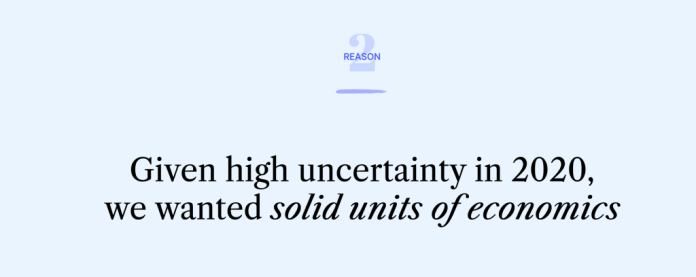
Reason #3 – The way our product is set up
In Codacy we have some customer segments. One is what we call our Enterprise segment, which sometimes uses our product on-prem. The second segment is more SMBs who tend to use our cloud product. And the third segment is composed of our self-service customers who can use the product without much intervention. This was the segment we would mainly focus on as part of our PLG work.
Luckily for us, we don’t have 3 different products. Instead, we have 1 core product packaged to be served either through the cloud or deployed on-prem. So, by focusing on improving our core product, which fundamentally was the self-service focused product, we ended up benefiting all the segments.
In summary, the last reason is: we improved our core product, which helped everything else.
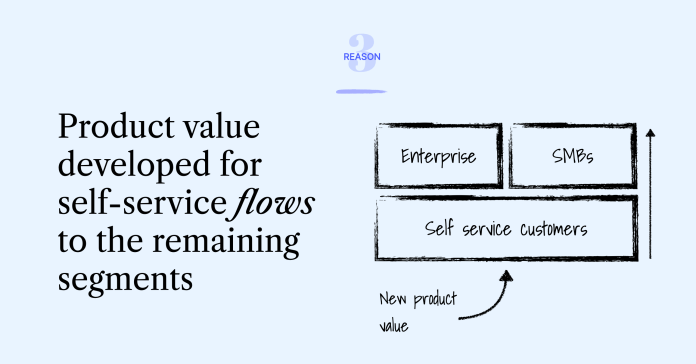
We designed a business plan in 2020 to become more product-led. This is what happened.

The graph above represents the ARR of the cloud self-service segment of Codacy. As you can see, it was mostly stable during 2019. We then started 2020, and after seeing a slight dip due to churn and repricing, we started seeing the results of our focus.
It costs us a tremendous amount of effort. This post is about that effort.
The lessons on changing to PLG
Lesson #1 – It takes time
The first lesson we took was: it takes an unpredictable and often underestimated amount of time. We initially thought a well-designed and aligned business plan was enough for us to start seeing results right away. However, it wasn’t the case.
When we started back in 2020, it took time to:
- First align our team on the direction we wanted;
- Plan our improvements across the organization and per team;
- Implement the changes we wanted;
- Re-align, because it was a big change it required consistent checking and re-alignement;
- Ultimately see results.
In fact, we now see that it took at least 6 months for us to start seeing impact!
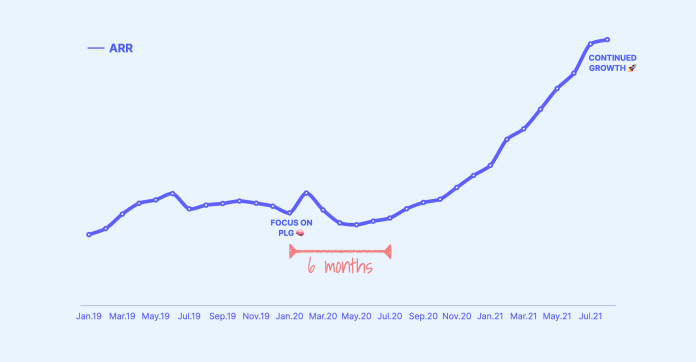
Our lesson: we underestimated the time it took to start seeing results. This caused frustration within our team, which, as most highly ambitious groups, craves impact. This frustration came at a bad time, as in 2020 we were locked up at home and fully remote for the first time (as 90% of other organizations). So, given a chance like this one, our lesson is that one should overestimate time.
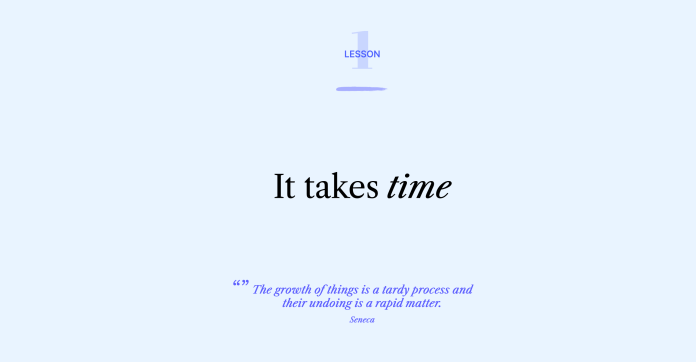
Lesson #2 – Experimentation is the name of the game
The second lesson is that you should enable experimentation.
Most of the initiatives that we tried, failed. Some had some impact. And 1 or 2 really killed.
The trick here is that there was no way to tell which of the bets we made provided the best returns. The only thing that worked was trying fast.
One of the features that we developed was a new streamlined way for people to add new users to their organizations, which is powerful because we sell seats.
From the moment that feature, which leveraged many core product improvements and enabled a better user experience to deal with your organization, entered into production, we started seeing companies add more people.
Our lesson: create space for the team to try and fail in order to achieve possible black swan type of features.
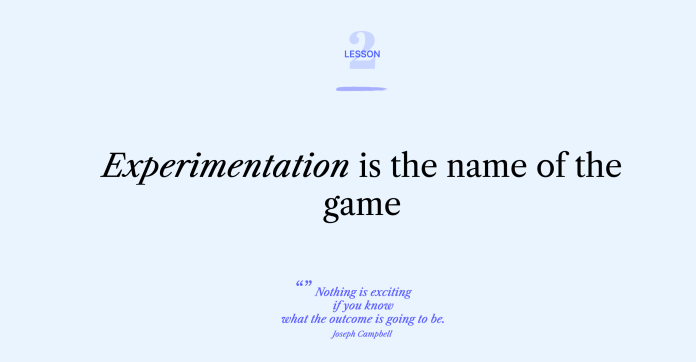
Lesson #3 – Alignment can be painful
The last, most painful, and final lesson is about alignment.
We were changing from being a sales-driven organization to becoming product-led. Being sales-led means that your roadmap and product over indexes on what sales and customer success have to say. For the most part, this has been the right decision over the years. However, as we’re imposing this change in the organization, being product-led meant we’d have to say no to many features. Features that could ultimately affect the likelihood of closing specific deals affect targets and compensation in the short term.
When you’re changing incentives, you have to be extra careful because they affect motivation and prioritization. So there were many moments when we had to re-align ourselves.
Our lesson: We underestimated the power of incentives, which impacted our priorities. Pay close attention to them. It’s a hard balance, especially if you’re transitioning from sales-led to product-led.

Conclusions
Becoming product-led is one of the most impactful changes you can make in your company. We’ve successfully achieved some PLG, but we’re still making it work for us. Time, Experimentation, and Alignment are crucial to making sure your culture keeps up with your ambitions of PLG.
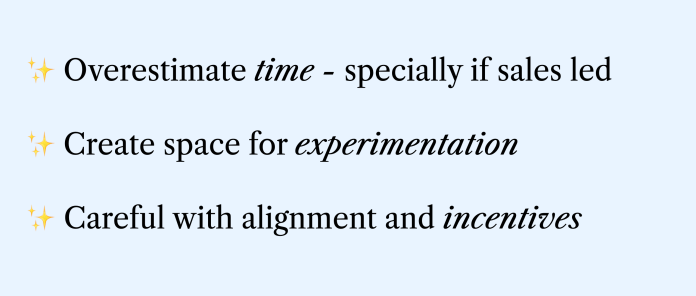
.svg)


